MDG Gap Task Force Report
Filter :
Sustainable Development Goals
Subject
Publication date
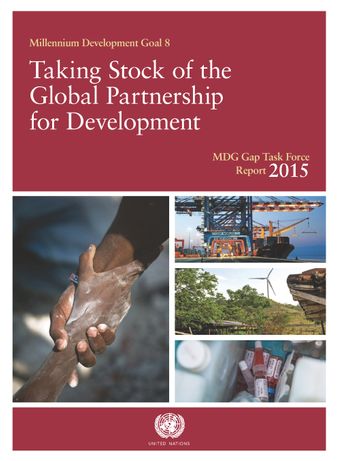
Millennium Development Goals (MDG) Gap Task Force Report 2015
Taking Stock of the Global Partnership for Development
The present report was prepared by the MDG Gap Task Force, which was created by the Secretary-General of the United Nations to improve the monitoring of MDG 8 by leveraging inter-agency coordination. More than 30 United Nations entities and other organizations are represented in the Task Force, including the World Bank and the International Monetary Fund, as well as the Organization for Economic Cooperation and Development and the World Trade Organization. The Department of Economic and Social Affairs of the United Nations Secretariat (UN/DESA) and the United Nations Development Programme (UNDP) acted as lead agencies in organizing the work of the Task Force.
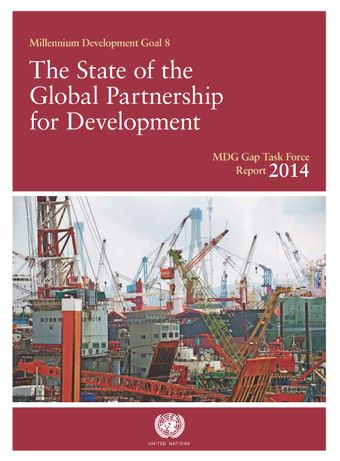
Millennium Development Goals (MDG) Gap Task Force Report 2014
The State of the Global Partnership for Development
The MDG Gap Task Force Report systematically tracks existing international commitments and their fulfilment at the international level in the areas of official development assistance, trade, debt relief, and access to essential medicines and technology as defined by the targets and indicators of MDG 8. The MDG Gap Task Force Report 2014 will build on the 2013 Report, by drawing lessons learned from monitoring MDG 8 and analysing conceptual gaps created by how MDG was originally defined. This should provide insight to discussions on the post-2015 agenda. The Task Force consists of more than 30 UN entities, including participation from the World Bank and the IMF, as well as the OECD and WTO. The Department of Economic and Social Affairs of the United Nations Secretariat and UNDP and are the lead agencies in coordinating the work of the Task Force.
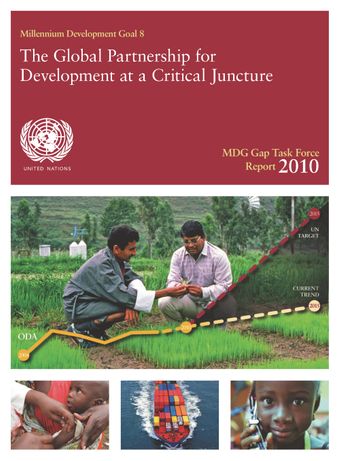
Millennium Development Goals (MDG) Gap Task Force Report 2010
The Global Partnership for Development at a Critical Juncture
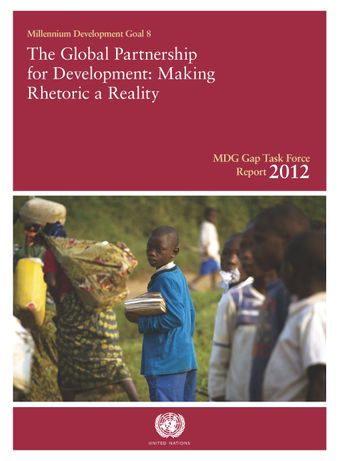
Millennium Development Goals (MDG) Gap Task Force Report 2012
The Global Partnership for Development - Making Rhetoric a Reality
The 2012 Report will continue to follow the progress on official development assistance, market access, debt sustainability, access to essential medicines and new technologies as prescribed by the Millennium Development Goal 8. Closer attention will be given to the impact of the global crisis on meeting the targets, and ways to further increase aid effectiveness following the recommendations of the Fourth High Level Forum on Aid Effectiveness. Some evidence on whether the needs of developing countries are being met will be presented. The Report will also serve as a building block to start formulating the post-2015 development agenda by taking stock of the progress made so far.
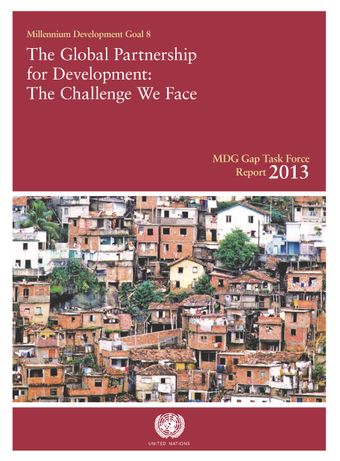
Millennium Development Goals (MDG) Gap Task Force Report 2013
The Global Partnership for Development - The Challenge We Face
The 2013 Report informs that there has been a certain backsliding on a number of commitments covered by MDG 8 in the past year, and some progress in others. Official development assistance has fallen for a second year in a row and the multilateral trade negotiations remain at an impasse, but duty free access for exports from developing countries has improved. But while usage of information and communication technologies increases, the costs remain higher in developing countries and essential medicines remain insufficiently accessible. Thus, there are some signs that political momentum for advancing international development cooperation has weakened. However, some governments have consistently pursued their commitments despite domestic austerity policies.
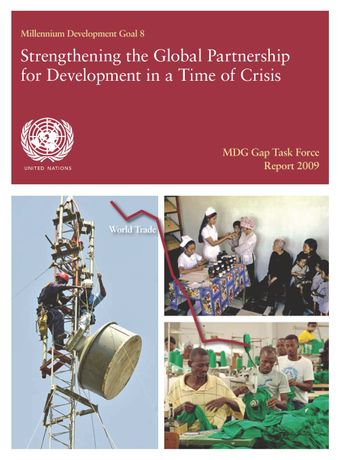
Millennium Development Goals (MDG) Gap Task Force Report 2009
Strengthening the Global Partnership for Development in a Time of Crisis
Further progress has been made towards fulfilling the promises embodied in the Millennium Development Goal 8 (MDG 8). However, the Global Partnership for Development has suffered important setbacks, most of which have arisen from the current state of the world economy which is experiencing its severest downturn since the Great Depression of the 1930s. In the countdown to 2015, urgent responses are needed to bridge the existing implementation gaps to make good on the promises made to achieve the Millennium Development Goals. The 2009 issue of the report by the United Nations Millennium Development Goals Gap Task Force identifies these gaps in detail and provides recommendations to all major stakeholders on how to address these gaps.
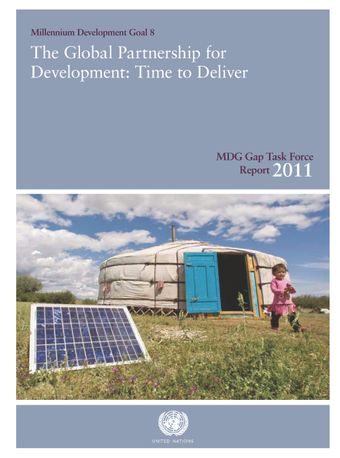
Millennium Development Goals (MDG) Gap Task Force Report 2011
The Global Partnership for Development - Time to Deliver
Significant gaps remain in delivering on the Millennium Development Goals (MDGs) in the areas of aid, trade, debt relief, access to new technologies and affordable essential medicines. This report monitors the progress made in achieving the targets of MDG 8, including continued attention to the impact of the global crisis on meeting the targets set under MDG 8 and embedding any new commitments resulting from the High-level Plenary Meeting of the 65th session of the General Assembly on the MDGs into the monitoring process. Policy coherence is a central theme of this report, which provides recommendations to all major stakeholders on how to address the remaining implementation gaps.
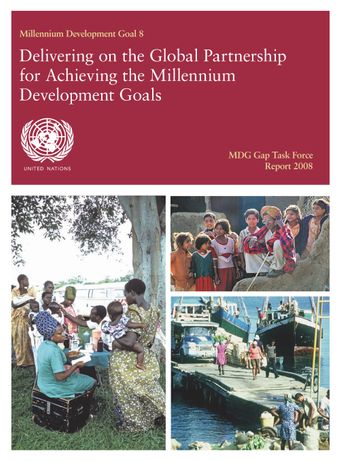
Millennium Development Goals (MDG) Gap Task Force Report 2008
Delivering on the Global Partnership for Achieving the Millennium Development Goals
The present report was prepared by the MDG Gap Task Force which was created to improve the monitoring of the MDG 8 by leveraging inter-agency coordination. The objective of the report is to identify remaining obstacles to accelerate progress in the achieving the targets contained in MDG 8. It highlights the degree of compliance to the commitments made by developed and developing countries with a view to strengthening the global partnership for development. The main message of the report is that while there has been progress on several counts, important gaps remain in delivering on the global commitments in the area of aid, trade, debt relief, and access to new technologies and affordable essential medicines.
